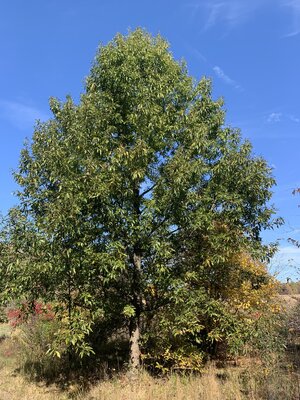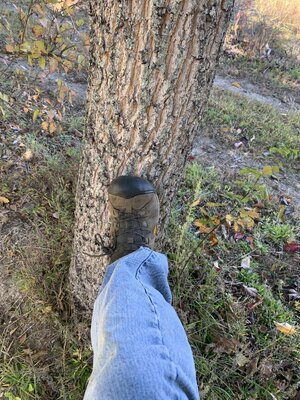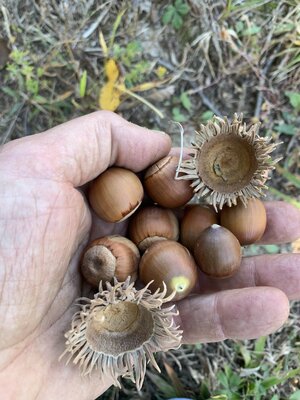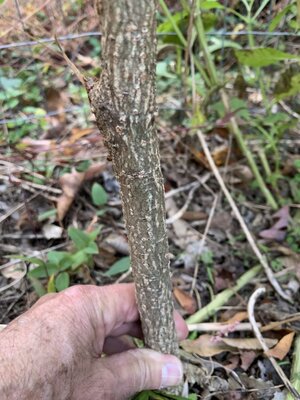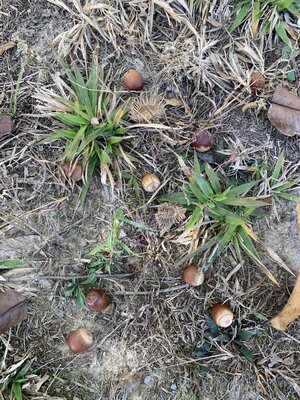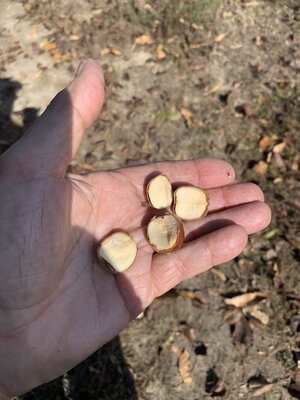Native Hunter
Well-Known Member
Enjoying this thread - my farm in the ozark mountains have a lot of these oaks you are talking about. A couple of observations that may help some :
-Our white oak species (mainly White Oak, Swamp White Oaks, and a few Swamp Chestnut Oaks i believe - my grandfather called them cow oaks) grow where the soil is the deepest on the farm - the bottom land and hill side benches, rarely any where else. my grandfather's saying was "if you see a white oak, you have good dirt there".
-Our Red Oaks (mainly black oaks and blackjack oaks, some plain jane red oaks) grow up on the ridge tops and steeper side hills.
-The Chinkapin Oaks grow in both the deeper soils in the bottoms and shallower soiled ridge tops, but not so much on the steeper side hills. The Chinkapin oaks are typically taller than the Red Oaks when growing near each other, but about the same overall height as the white oaks in the bottoms.
-The Dwarf Chinkapin Oaks grow on the thin ridge top soil that also have rock outcrops. These trees that I have "self-identified" have grown about 15-20 feet tall max, and form a what we in texas refer to as a "motte" style cluster (not to steal doggr's random clusters idea). They have been the same size for probably the last 10 years or so - didn't know what they were until recently from this forum.
As for which one is best for wildlife, the chinkapin and dwark chinkapin are the winners here. when they are dropping, the deer and turkey flood the area until the acorns are gone. My dad had a friend send him game pictures of a tom and small buck "chasing" each other around this tree on his property. My dad told the guy "you have a chinkapin oak right there", the guy asked my dad how he knew, and my dad responded - "that same thing happens on our farm when the chinkapins are dropping". The dwarf chinkapins are located on the lot next to my uncle's house - my uncle sends pictures and texts all the time when they are dropping of turkey and deer in the "mottes".
We are currently working on planting White Oaks, Chinkapin Oaks, and Dwarf Chinkapin Oaks. We are trying to Ring our Fields with White Oaks and Chinkapins, replacing the Black Walnuts my grandfather and his father planted on the field edges. Then we are going in the fields to create what we hope is more "mottes" of Dwarf Chinkapins to replace the Black Locust trees that have started filling in the fields. Also using the Dwarf Chinkapin oaks as replacement trees for the ridge top glades we are clearing of cedars.
We have all the red oaks we could ever want, and have started cutting them down to replace with a variety of white oaks, along with making wood for barbecue. I'm pretty sure I cut red oaks the rest of my lifetime and not get them all.
I am trying to get some bur oaks, concordia oaks, and others growing around the farm; but my uncle has ran over 70% of them with the brush hog. He claims he didn't know they were planted, but he helped plant them - i'm starting to think he doesn't want them, and just trying to be "nice" about it.
I'm glad you are enjoying the thread, and it sounds like you have put a lot of thought into developing your plan for oaks. I'm really glad to have found lots of the white oak family species that you mentioned. From here on out I will be trying to watch them closer for acorn production. Thanks for your comments.


